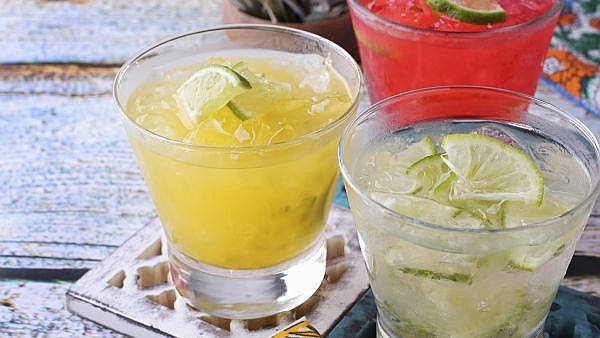New York - Ask most people about Mexican spirits and one of two is likely to spring to mind: tequila or mezcal. Given they're the two heavyweights of the Mexican spirit world, it's hardly surprising, but it is somewhat disappointing, especially when Mexican liquors and liqueurs are as diverse as the country from which they come. So the next time your party conversation swings to talk of Mexican cocktails? Read this and you'll be smartest one at the shindig.
Two of the better-known alternatives, Sonoran bacanora and Chihuahuan sotol, likely have their border state status to thank for their growing U.S. presence. Sotol (which is actually derived from the Desert Spoon, a flowering shrub), however, has been popping up as far east as NYC for years, notes New York-based Mexican bartender Carlos Soto. The best mixers? Pineapple and grapefruit, thanks to its "pleasingly dry and citric notes," says Soto.
And then you have the rising star of the underrated Mexican drinks scene, raicilla. The younger, cooler brother of Jalisco's far more famous tequila (the underrated Dave Franco to jack-of-all-trades James, if you will), raicilla is often described as sweeter than the standard mezcal and, thanks to the La Venenosa brand, can also be found in the U.S. for $60-$200, depending on the type.
 |
Or there's the tequila-like sisal, a spirit sourced from one of the first domesticated Mexican maguey plants (agave is its scientific name), henequen, mainly in the tiny Yucatán town of Izamal.
However the most divisive of all - the viscosity of this milky white beverage can be off-putting to some - is pulque. The Mexican Marmite of the drinking world, produced from the fermented sap of the maguey plant, has spiked in popularity in recent years.
Yet many avid drinkers would argue that the best traditional Mexican drinks have nothing to do with spiky desert-dwellers. Take Kahlúa, for example, known for being the chief component in a White Russian. Originating in the state of Veracruz, this creamy after-dinner beverage is made from another natural staple of Mexico's food heritage: the coffee bean.
The Yucatán peninsula also dabbles in the after-dinner drink scene, with the possibly pre-Hispanic Xtabentún. This anise, honey and rum liqueur can be served solo or mixed with tequila, for those times when a 40 percent proof shot alone doesn't quite hit the spot. (We've all been there.)
Then there's aguardiente, which Michoacán has perfected in the form of the hyper local rum-like charanda. Mexico City-based New Yorker Laura Samuels, who works in public relations at an entertainment company, rather promisingly describes it as so good "it makes me personally wanna take off all my clothes." Do with that information what you will.
Recipe: Colibrí (Hummingbird)
Few people realize that tequila can be more than just margarita or shot fodder. In fact, one of the most refreshing tequila cocktails, the Paloma, calls for just grapefruit soda, salt and lime; however, I recommend swapping out tequila for sotol in this easy twist on a super simple classic.
30ml sotol of your choice
Grapefruit soda to taste
Juice of half a bartender's lime
Salt
Add ice, lime juice and a dash of salt to a tall salt-rimmed glass. Pour over the sotol and grapefruit soda. Stir carefully and serve with a lime wedge.
Original article


